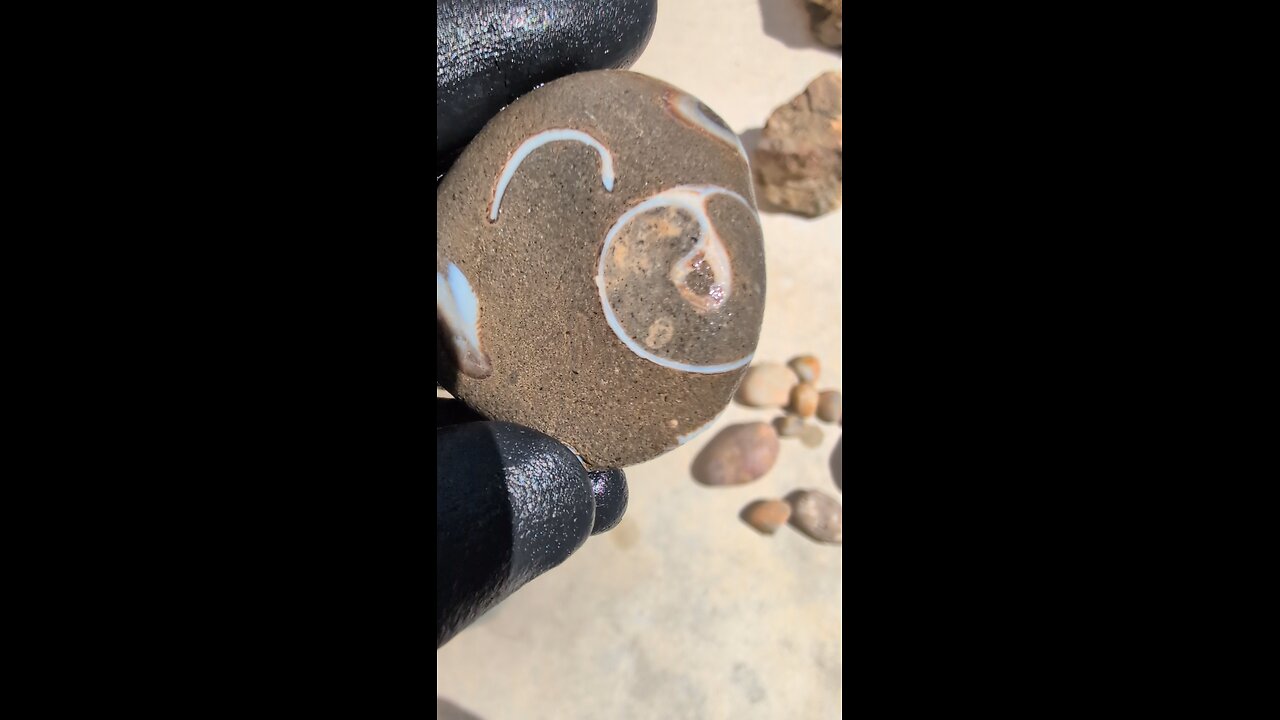Premium Only Content

Trilobite Fossils!
Trilobites are extinct marine arthropods that lived from the Cambrian to the Permian periods (about 521 to 252 million years ago). The white, curved lines and circular patterns on the rock surface are characteristic of a trilobite's cephalon (head) and possibly part of the thorax. The spiral and concentric patterns, especially the one near the top, likely represent the glabella (the central raised area of the head) and surrounding features like the facial sutures or eye regions, which are common in trilobite molds. The "smiling" curve at the bottom could be part of the cephalic margin or a segment boundary.
This mold preservation indicates that the original exoskeleton of the trilobite dissolved over time, leaving an impression in the surrounding sediment, which was later filled with minerals like calcite (the white material). The overall appearance suggests it could be a trilobite from a genus like Phacops or Dalmanites, both of which have prominent cephalic features and are commonly found in Paleozoic rocks, particularly from the Devonian period (419 to 358 million years ago). The other fossils you've shown—tabulate and rugose corals, as well as other trilobite molds—support the idea that this specimen likely comes from a similar marine environment in the Paleozoic era.
-
 LIVE
LIVE
LFA TV
2 hours agoLFA TV ALL DAY STREAM - THURSDAY 8/21/25
8,744 watching -
 LIVE
LIVE
The Bubba Army
23 hours agoAnother LopSided Jake Paul Fight? - Bubba the Love Sponge® Show | 8/21/25
5,427 watching -
 1:02:42
1:02:42
Dialogue works
1 day ago $3.19 earnedJohn Helmer: Trump Ditches Ceasefire? Despite EU & Zelensky Pressure
46.9K21 -
 10:48
10:48
Nikko Ortiz
20 hours agoDont Watch These TikToks
84K13 -
 10:17
10:17
MattMorseTV
19 hours ago $15.30 earnedTrump's DOJ just DROPPED a NUKE.
87.2K96 -
 2:09:32
2:09:32
Side Scrollers Podcast
22 hours agoStreamer DIES Live On Air + Your Food is Poison + Xbox Announces $900 Handheld | Side Scrollers Live
41.1K16 -
 15:32
15:32
GritsGG
18 hours agoFull Auto ABR Sniper Support! Most Winning Quad Win Streaking!
24.7K4 -
 7:42
7:42
The Pascal Show
17 hours ago $1.98 earnedBREAKING! Police Provide UPDATE In Emmanuel Haro's Case! Is Jake's Lawyer Lying To Us?!
32.7K2 -
 2:29:46
2:29:46
FreshandFit
10 hours agoAfter Hours w/ Girls
135K92 -
 5:28
5:28
Zach Humphries
16 hours ago $2.59 earnedNEAR PROTCOL AND STELLAR TEAM UP!
36.4K4